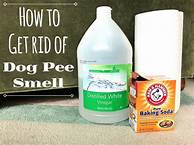How to Start a Pet Store
Starting a pet store can be a rewarding and profitable business, but it also requires careful planning and execution. Here are some steps to help you get started:

Research the Market
1. Identify the target market: Determine the types of pets and pet owners in your area and the specific products and services they are looking for.
2. Analyze the competition: Research existing pet stores in your area to understand their strengths, weaknesses, and pricing strategies.
3. Conduct market research: Conduct surveys or interviews to collect data on the needs and preferences of potential customers.
Choose a Business Location
1. Consider foot traffic: Select a location with high foot traffic and good visibility, such as a shopping center, mall, or busy street.
2. Assess the accessibility: Ensure the location is easily accessible by car, public transportation, and foot.
3. Zoning regulations: Check with local authorities to ensure the location complies with zoning regulations for pet stores.
Secure Financing
1. Develop a business plan: Create a detailed business plan that outlines your business concept, financial projections, and marketing strategies.
2. Seek financing: You may need to secure financing from banks, credit unions, or investors to fund the startup costs.
3. Manage your finances: Establish a budget and keep accurate financial records to track your income, expenses, and profits.
Obtain Necessary Permits and Licenses
1. Business license: Register your pet store with the appropriate government authorities and obtain a business license.
2. Animal care license: Apply for an animal care license that allows you to sell or care for animals in your store.
3. Health and safety regulations: Ensure your store complies with health and safety regulations, such as those for animal welfare, sanitation, and fire safety.
Design and Stock Your Store
1. Design: Create an attractive and welcoming store layout that allows customers to easily browse and select products.
2. Fixtures and equipment: Invest in suitable fixtures and equipment, such as display cases, shelves, tanks, and cash registers.
3. Inventory: Stock your store with a variety of pet supplies, including pet food, treats, toys, bedding, grooming supplies, and pet care products.
Hire and Train Staff
1. Hire knowledgeable staff: Recruit passionate and knowledgeable staff with experience in pet care and sales.
2. Provide training: Provide your staff with comprehensive training on customer service, animal care, and sales techniques.
3. Ensure compliance: Train your staff on animal care regulations and ensure they adhere to ethical practices.
Market Your Store
1. Create a strong brand identity: Develop a compelling brand identity, including a logo, tagline, and consistent visual identity.
2. Implement a marketing strategy: Develop a marketing strategy that includes advertising, social media, and community involvement.
3. Offer competitive pricing: Offer competitive pricing on your products and services to attract customers.
Provide Excellent Customer Service
1. Provide personalized service: Offer personalized service to customers by addressing their needs and providing knowledgeable advice.
2. Offer grooming and other services: Consider offering grooming, pet training, or other services to increase customer satisfaction and generate additional revenue.
3. Build customer loyalty: Implement a loyalty program or offer special promotions to encourage repeat business.
Declaration: All article resources on this website, unless otherwise specified or labeled, are collected from online resources. If the content on this website infringes on the legitimate rights and interests of the original author, you can contact this website to delete it.






